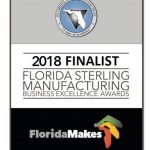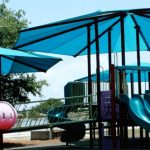Sun Safety Part 3
Sun Safety Part 3
In our last installment of Sun Safety, we will discuss why it is paramount to assess each situation individually, taking into account the position, the design and the surrounding environment to ensure that optimal shade is provided, prior to installing a shade structure.
Design Elements
Best Fit
Strive for ultimate shade coverage. When choosing a shade structure, it is important to remember the size of the area you wish to cover, and the position of a person or the equipment in relation to the edge of the shade structure. This will impact the amount of UVR received. Although it is not always possible to achieve optimal shade, try to vision the ultimate and try to meet all your needs.
Consider the use of the shade area. This could include passive play, spectators or active sports, equipment coverage – all of which have different needs.
Consider the existing landscape. Well-planned shade will utilize existing features and acknowledge any potential problems such as highly reflective surfaces.
Know your site limitations. Consider potential problems including playground equipment interference, vandalism, visibility issues, and exposure to strong winds. These will impact maintenance costs. Appropriate design will eliminate or minimize potential problems if identified during the design phase.
Finally, always take into account building codes.
Best Value
Water Resistant vs. Waterproof
Waterproof covers are more costly than breathable fabric covers. Consider the application. Is waterproof truly required? While not waterproof, breathable fabric covers provide up to 80% water resistance and complete hail protection, and remember, they are significantly cooler.
Solid Roof vs. Fabric Roof
There are a range of materials that provide shade, from fabric shade cloth to solid roof structures. Solid roofs typically cost 50-60% more than fabric roofs. Fabric roofs are much easier to maintain. The breathable fabric prevents mold, mildew and termites. In addition, fabric roofs are far less costly to replace than solid roofs.
Solid Roof Shade Structures
This shade option is often the most expensive and long lasting, providing very high UVR and weather protection. Designs include shelter sheds, roofed stadiums and gazebos. Materials used include corrugated steel, roofing tiles and aluminum. While the shade provided by these structures is highly effective in blocking UVR, they tend to create and “oven” effect and do not cool as well as fabric shade structures.
Fabric Shade Structures
Fabric shade structures provide varying UVR protection and are typically less expensive than solid roof structures. Shade cloth can be used on permanent frames or on temporary structures such as shade umbrellas. Usually, they do not offer 100% rain protection. Structures need to be of adequate height (too low and they become a source for vandalism, too high and they provide less UVR protection) and designed to withstand strong winds.
The quality of the shade fabric will largely determine the effectiveness of the UVR protection. Two main fabrics to choose from are coated fabric (i.e. canvas) and breathable shade cloth.
- Coated fabric may have the following features: tight weave; coating to resist mildew, rot and light exposure; up to 99% UV protection; and water resistant. However, the lifespan is much shorter than breathable shade cloth and it traps in the heat.
- Breathable shade cloth may be woven or knitted. This allows some light, air and water through, and usually has a long lifespan. This shade cloth has varying degrees of UVR protection. Most shade cloth falls below 94% UVR protection. The fabric allows the flow of air and the escape of heat, creating a cooling effect. The higher the shade factor, the less light is emitted through. Example: black fabric with a 95% shade factor allows 5% of the light to pass through; white fabric with a 45% shade factor allows 55% of the light to pass through.
Form & Function: my new shade structure is beautiful – but where is the shade!?
Keep in mind that the protective function of the shade structure is more important than the aesthetic appeal. Although with proper design elements, both can be achieved.
- Continuous shade – Design with continuous shade in mind. By using structures that offer continuous shade and proper placement of multiple structures, the designer can avoid the less desirable “daisy effect” (this occurs when there are areas of sun coming through gaps or breaks in the fabric). The “daisy effect”, though aesthetically pleasing, does not provide effective shade.
- Sails – Shade sails are large fabric canopies supported by columns or buildings without upper roof members. This is an extremely dramatic design. It is critically important that the sail is used in proper applications and positioned perfect for correct shade coverage. Very often this is not the case, resulting in very little shade.
- Titan structure vs. multiple manageable structures – Multiple shade structures are usually the better solution when fabric removal is required (i.e. during hurricanes or major wind events), though there are projects that require a titan structure. A Titan is one structure, one roof line encompassing an area greater than 50’ x 80’ clear span no center columns. Through experience we have learned that this size structure requires more maintenance during major wind storm events. Similar coverage can be achieved with fabric structures by interconnecting multiple structures (2) 40 x50 (sharing columns, separate roof lines). Smaller structures are more manageable in terms of installation, maintenance and repair costs. However a center column is present and may pose as an obstruction.
Positioning
The amount of protection offered by a shade structure varies with the angle of the sun. The shade cast may not always be directly beneath the shade structure. At certain times of the day, the shade may be outside the structure, providing negligible UV protection. The design of shade structures must maximize the shade cast for a changing solar angle.
A well-designed and correctly-positioned shade structure cast shade where and when it is most needed – at the right time of day and at the right time of year. Incorrect positioning of shade structures and trees can result in unexpected shadows that provide little shelter from the sun.
Sun Declination
Use this link to determine sun declination for your project.
When designing and constructing a shade structure, the entire shade environment needs to be carefully considered. If you would like further information or assistance with your project, please contact us at [email protected]







